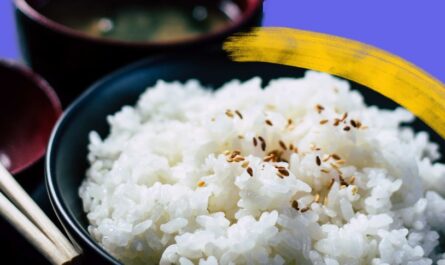For sushi enthusiasts and professional chefs alike, the allure of traditional sushi-making lies not only in mastering the art itself but also in appreciating the importance and elegance of the wooden sushi tools. These tools not only help craft the perfect sushi but also reflect a long-standing tradition of Japanese culinary arts. Hence, knowing the proper care tips for wooden sushi tools is essential for maintaining their functionality and extending their lifespan.
Understanding the nuances of preserving these traditional tools is vital, given their significance in the craft. Here, we delve into the essential tips that ensure your wooden sushi tools remain in top condition, allowing you to create authentic sushi dishes with precision and care.

1. Understanding Wooden Sushi Tools
Wooden sushi tools are significant in the art of sushi-making due to their natural aesthetic and usability. These tools include sushi geta, wooden sushi rolling mats (makisu), hangiri (rice mixing bowls), and other implements that require careful maintenance.
1.1 The Importance of Wooden Sushi Tools
The natural properties of wood allow these tools to retain moisture, prevent sticking, and impart a subtle aroma to the sushi rice. This quality makes them indispensable in traditional sushi-making.
1.2 Different Types of Wooden Sushi Tools
From the flat, bamboo mat used to roll sushi to the large wooden bowls for mixing rice, each tool serves a specialized purpose, ensuring the authentic nature of the sushi.
2. Why Care is Essential
Proper upkeep of wooden sushi tools ensures that they are not only sanitary but also perform their roles effectively. Neglecting these tools can lead to wear and tear, ultimately affecting the sushi’s taste and presentation.
2.1 Impact of Neglect
Tools that are not maintained properly can harbor bacteria, develop cracks, or become overly dry, leading to unsanitary conditions and potential food safety issues.
3. Routine Cleaning Practices
Regular cleaning after each use is one of the fundamental care tips for wooden sushi tools. This process ensures they remain free of food residue and unpleasant odors.
3.1 Best Cleaning Methods
Rinse the tools immediately after use with warm water to remove rice and food particles. Avoid using soap as it can penetrate the wood and alter the flavor of future sushi batches.
3.2 Drying Techniques
Once washed, immediately dry the tools with a soft cloth to prevent any moisture retention that could lead to mold growth. Optionally, air drying in a well-ventilated area can be effective in avoiding mold.
4. Periodic Oiling
Applying mineral oil periodically will help maintain the moisture levels in wooden sushi tools, preventing them from cracking or warping over time.
4.1 Choosing the Right Oil
Use food-grade mineral oil, as it is safe for kitchen instruments and does not spoil like organic oils.
4.2 Applying Oil Correctly
Apply a thin coat of oil with a soft cloth after washing and drying the tools. Let the oil absorb completely before using the tools again.
5. Storage Tips
Proper storage plays a crucial role in preserving the condition of your wooden sushi tools. Keep them in a dry, cool place away from direct sunlight.
6. Handling Special Scenarios
From avoiding dishwasher use to understanding how to manage cracks, these considerations ensure the long lifespan of your tools.

Frequently Asked Questions
What is the best way to clean wooden sushi tools?
Cleaning wooden sushi tools involves rinsing with warm water post-use and wiping dry immediately. Avoid soap to prevent residue and odor retention.
How often should I oil my wooden sushi tools?
Oiling should be done monthly or whenever the wood appears dry to maintain its integrity and moisture.
Why shouldn’t I put wooden sushi tools in the dishwasher?
The high heat and moisture from dishwashers can warp and damage wooden sushi tools, making hand washing the preferred method.
As you indulge in the art of sushi-making, remember that the care and maintenance of your wooden sushi tools is integral to perfecting the craft. For more insights on sushi culture and practices, consider exploring [Masterclass’s guide on consuming sushi](https://www.masterclass.com/articles/how-to-eat-sushi) (external link, nofollow) or delve into [Cobo Sushi’s tips on Japanese etiquette](https://cobosushi.com/5-japanese-sushi-etiquette-tips/) (external link, nofollow) to enhance your appreciation of this culinary art form.
This article contains affiliate links. We may earn a commission at no extra cost to you.




